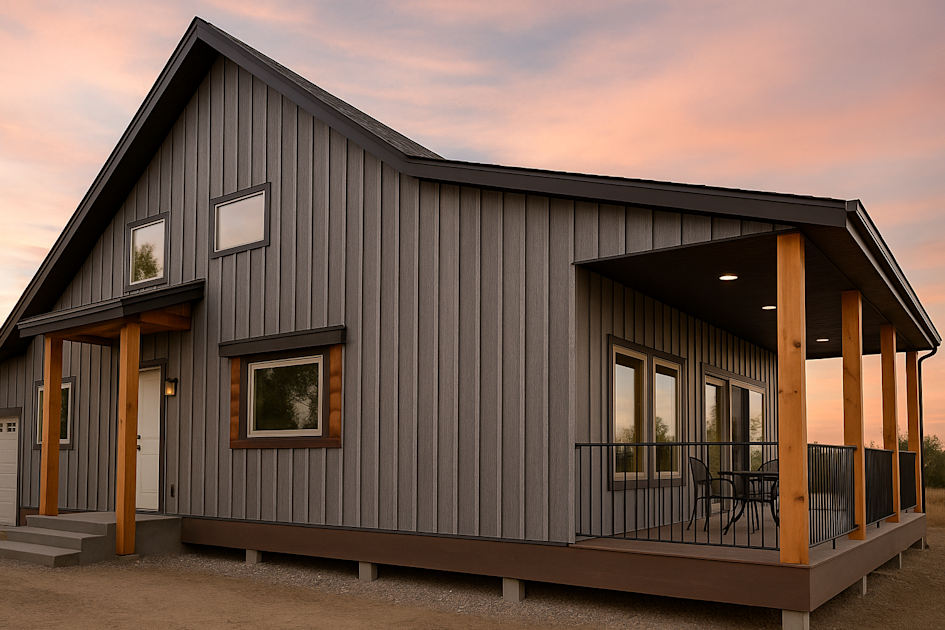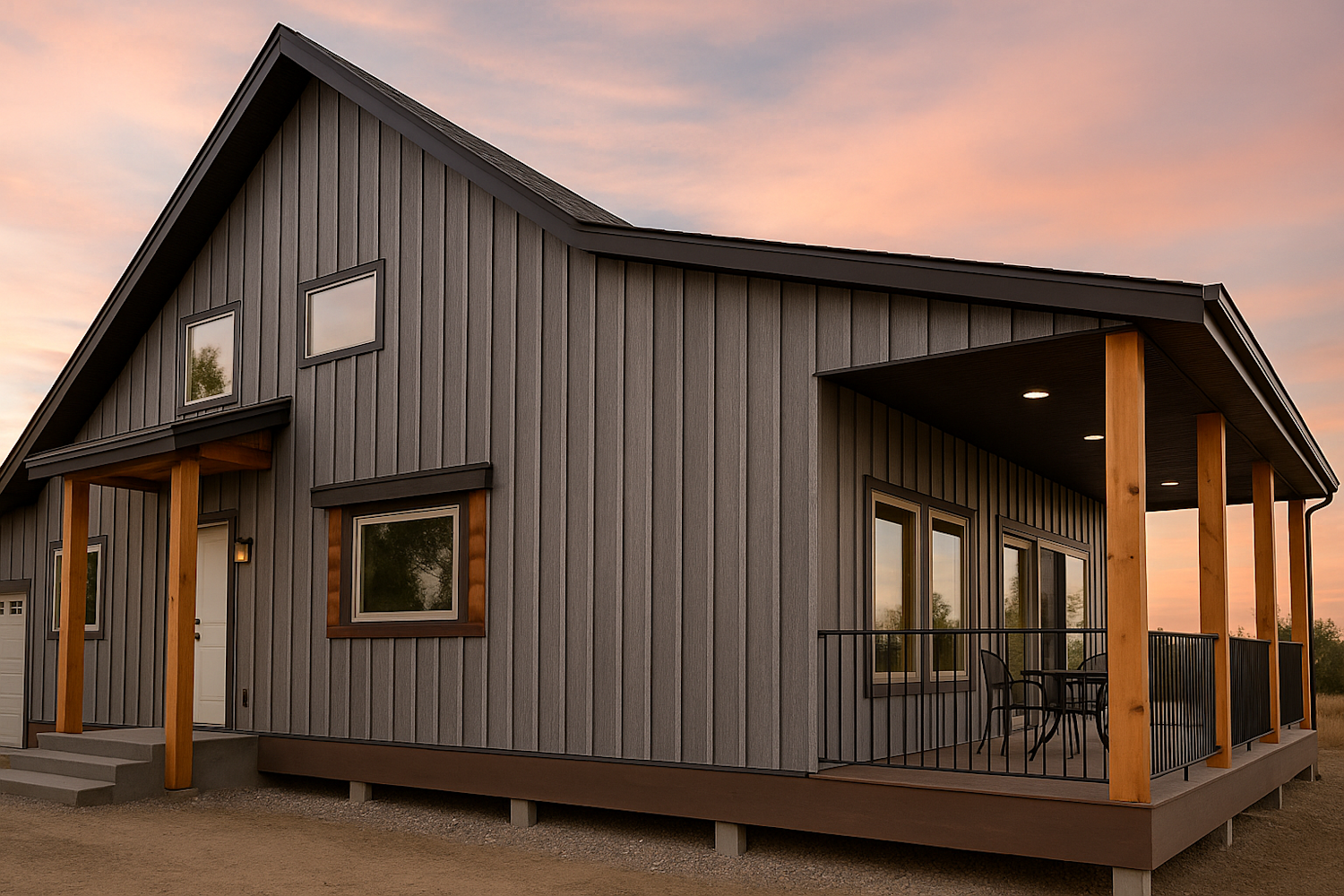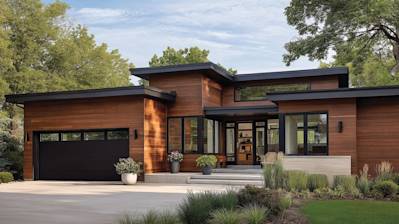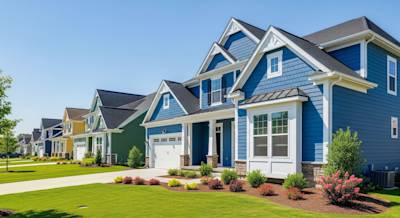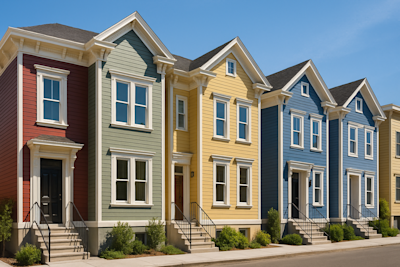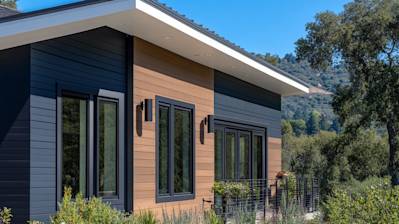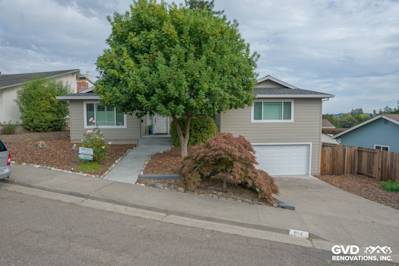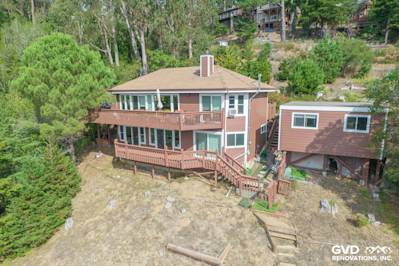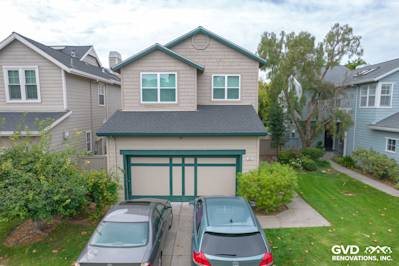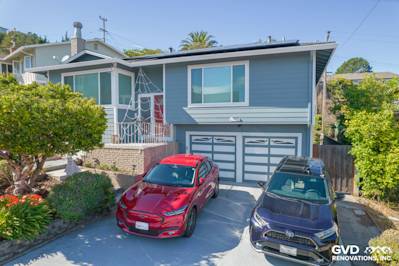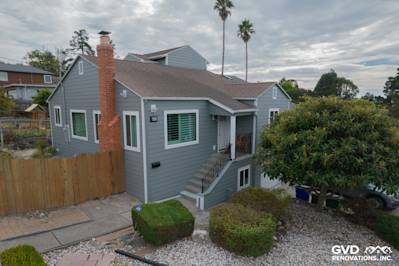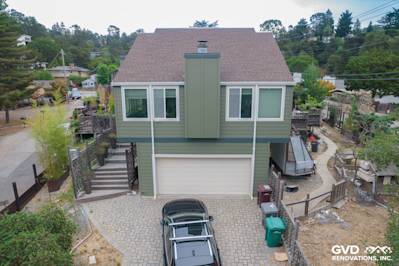Metal siding can be one of the smartest design choices you make for your home. Both aesthetically pleasing and incredibly durable, its shining surface can completely transform the look of residential or commercial properties. This comprehensive guide will provide an in-depth look at metal siding covering various aspects such as types, benefits, cost factors, maintenance tips, and more.
The Emergence of Metal Siding
Metal as a siding material became notable during the Industrial Revolution. Despite its connection with commercial and industrial buildings, it has gradually been recognized for its potential in the residential realm.
Exquisite Types of Metal Siding
Metal siding comes in various forms, each offering unique features and aesthetics. The main types of metal siding are:
Aluminum Siding: Known for its lightweight, aluminum siding is resistant to rust and corrosion, making it a popular choice in coastal areas where salty air can erode most other materials.
Steel Siding: Steel siding is one of the most robust materials available, with high resistance to fire, water, decay, and insects.
Copper Siding: Highly durable and uniquely stunning, this premium option develops a greenish patina over time - a feature many find appealing.
Zinc Siding: Zinc is a versatile material with the ability to adapt to the weather conditions in its environment and repair scratches naturally over time through a process called 'patination.'
Corrugated Metal Siding: This style of siding has a wave pattern and known for its high strength-to-weight ratio and cost-effectiveness.
Benefits of Metal Siding
With a fusion of durability and style, metal siding offers several notable benefits:
Longevity: Metal siding has superior durability and can last for decades with minimal maintenance.
Energy Efficiency: It has excellent insulation properties, making it energy-efficient by optimizing climatic conditions inside the home.
Fire Resistance: Metal is non-combustible, making it highly resistant to fires.
Environmentally Friendly: Metal siding is often made from recycled materials and is fully recyclable, making it a sustainable choice.
Understanding Cost Factors of Metal Siding
The cost of metal siding can vary greatly depending on several factors:
Material: The type of metal used (aluminium, steel, copper, zinc) determines the cost. Premium materials like copper and zinc tend to be more expensive than aluminum or steel.
Labor: Installation of metal siding requires professional help, and the labor cost can substantially impact the total cost.
Existing Siding Removal: If an old siding needs to be removed before installing the new one, it could potentially add to the cost.
Installing Metal Siding Correctly
Proper installation is crucial for the longevity and effectiveness of your metal siding. Professionals are recommended for this task due to the specialized tools and skills required. It involves:
Underlayment Installation: This is the first stage of the process where a weather-resistant barrier is applied over the sheathing.
Trim Application: This involves applying trim to every corner and around windows and doors for neat finishing.
Siding Installation: Panels are attached starting from the bottom, clipping each row into the one below.
Finishing Touches: After the panel installation, the final trim pieces are applied around windows, doors, and at the corners to complete the project.
Maintaining Your Metal Siding
Keep your metal siding looking as good as new with these simple maintenance steps:
- Routine cleaning with mild detergent and water
- Inspecting for damage regularly, especially after harsh weather
- Touching up any areas where the paint or finish has been compromised
- Keeping gutters cleaned to prevent staining or damage

Frequently Asked Questions about Metal Siding
What Types of Metal are Used to Make Metal Siding?
Metal siding can be crafted from a variety of materials, but the most common are aluminum and steel. Both of these metals offer durability, but each comes with its unique strengths. Aluminum is lighter, more resistant to corrosion, and requires less upkeep, while steel is heavier, stronger, and more resistant to denting.
Can Metal Siding Be Installed Over Existing Siding?
In most cases, metal siding can be installed over your current siding. However, this isn’t always the case - for example, if your existing siding is deteriorating or buckling, it’s best to remove it before installing metal siding.
Are there Different Styles of Metal Siding?
Yes, metal siding comes in a range of styles and profiles to match any architectural design, whether contemporary or traditional. Styles include vertical, horizontal, and ribbed panels, as well as shingles and tiles.
How Long Does Metal Siding Last?
Metal siding is known for its longevity and durability. On average, metal siding can last between 40-60 years, or even more, with proper care and maintenance.
How Does Metal Siding Perform in Different Climates?
Metal siding generally performs excellently in varying climates. It can resist harsh weather conditions, including snow, hail, and high winds, and it's highly resistant to fire. However, metal siding can be susceptible to rust in climates with regular rain or heavy moisture.
Is Metal Siding a Good Insulator?
Metal siding, in itself, does not provide high insulation. However, when installed with an insulation material, it can provide excellent thermal efficiency, keeping your home warm in winter and cool in summer.
Can I Paint My Metal Siding?
Absolutely! While metal siding comes in a wide range of colors, you can also choose to paint or repaint it to match your taste or to give your home a refresh.
Is Metal Siding Environmentally Friendly?
Yes, metal siding is often made of recycled materials, and it's also completely recyclable at the end of its life. Moreover, the long lifespan of metal siding reduces the need for replacement, lessening the burden on precious resources.
Can Metal Siding Be Installed DIY Or Is Professional Installation Recommended?
Installing metal siding can be a complex process, and while the do-it-yourself approach may be tempting, professional installation is generally recommended to ensure correct installation.
How Does Metal Siding Compare to Other Types of Siding?
Compared to other types of siding, metal siding is durable, fire-resistant, and low in maintenance. Its longevity can outweigh initial cost concerns as it tends to last much longer than wood or vinyl siding, making it a valuable investment in the long run.
Is Metal Siding Suitable for Any Building Type?
Metal siding is versatile and can be used for a range of building types, including residential, commercial, and agricultural buildings. It's also an excellent choice for contemporary structures due to its modern appearance.
How Can I Repair Damaged Metal Siding?
Repairing metal siding typically involves removing and replacing the problematic panel. Depending on the degree of damage, it might be possible to repair minor issues with appropriate products, such as patches for small holes or specific paint for scratches.
Pros of Metal Siding
Durability
One of the biggest advantages of metal siding is its extreme durability. Metal siding is known to resist most forms of damage, including impacts from flying debris or hail. Unlike wood siding, it does not rot or warp, and unlike vinyl, it does not break or crack. Metal siding is also fire resistant, providing increased protection for your home.
Long Lifespan
In fact, the robustness of metal siding often allows it to outlast other types of siding. Depending on the type of metal used and with proper maintenance, metal siding can last up to 50 years or more, a significant improvement over alternatives.
Low Maintenance
Another perk of metal siding is that it requires very little maintenance. It does not need to be painted frequently, and can be easily cleaned with a hose and a little bit of soap, making it ideal for busy homeowners who have little time for regular up-keeping tasks.
Environmentally Friendly
Metal siding is usually made from recyclable material, and equally, the siding itself can also be recycled at the end of its useful life. For environmentally conscious homeowners, this makes metal siding an attractive option.
Pest Resistant
Unlike wood siding, pests such as termites or carpenter ants cannot damage metal siding. This resistance to pests can save homeowners significant costs in pest control and repair.
Cons of Metal Siding
Cost
Perhaps the most notable con of metal siding is its cost. Initial installation costs for metal siding often run higher than both vinyl and wood sidings. However, it’s important to note that the long lifespan and low maintenance of metal siding can offset these upfront costs over time.
Noise
Metal siding is subject to making noise during periods of high winds or heavy rain. The noise can be disruptive for some, and may require additional insulation during installation to aid in noise reduction.
Susceptible to Dents
While the durability of metal siding is one of its key advantages, it is also prone to dents from hail or other impact damage. Although minor, these dents can affect the aesthetic appearance of the home.
Reflection
Certain types of metal siding may cause unnecessary glare due to sunlight reflection, which may be uncomfortable for both household members and neighbours. It's something to consider when choosing an exterior finish.
Color Fading
While many types of metal siding are treated to resist changing color, exposure to the sun can eventually cause the siding to fade over time. This could require repainting or replacing - tasks that could be avoided with other siding options.
Installation Complexity
Metal siding, particularly in large panels, can be more challenging to install than other types of siding. It often needs professional installing, which can add to the overall cost. DIY enthusiasts may be better off choosing a material that is easier to install.
Myth: Metal Siding is Expensive
Myth 1.1: High Upfront Costs
A common misconception is that metal siding is prohibitively expensive compared to other siding options like vinyl and wood. While it's true that the upfront costs might be higher, the overall value it adds to a home and its durability make it a worthy investment. In the long run, you save on maintenance, repair costs, and possible replacement expenses that would come with other siding materials.
Myth 1.2: Not Cost-Effective
Another misconception is that metal siding is not cost-effective due to its high price point. On the contrary, it has impressive insulation properties that can make a major difference when it comes to energy efficiency. Metal siding can greatly reduce heating and cooling costs, leading to significant savings over time.
Myth: Metal Siding is Noisy
Myth 2.1: Amplifies Rain Noise
A prevailing myth is that metal siding amplifies the sound of rain, thus creating a noisy environment indoors. However, modern metal sidings are installed with high-quality insulation materials that can effectively muffle any sounds from the outside, including heavy rain.
Myth 2.2: Produces Noise when Temperatures Change
Many people think that metal siding creates popping noises when it expands or contracts with temperature changes. But a properly installed metal siding, with allowance for inevitable expansions and contractions, will remain silent regardless of the weather or temperature shifts.
Myth: Metal Siding is Prone to Rust
Myth 3.1: Rusts Easily
Many believe that all metal rusts easily, so metallic siding must also do so. Modern metal sidings, however, are fashioned from galvanized steel or aluminum and coated with rust-resistant finishes. This makes them highly resistant to rust and corrosion.
Myth 3.2: Damages from Oxidation
It's a well-persisted thought that oxidation damage is inevitable with metal sidings. However, as mentioned above, contemporary metal sidings are treated with protective coatings that prevent oxidation and corrosion.
Myth: Metal Siding Lacks Variety and Aesthetic Appeal
Myth 4.1: Limited Design Options
The belief that metal siding options are limited and cannot match the aesthetic of a structure is widely propagated. Today's market offers a myriad of styles, textures, and colors in metal siding. Options range from the sleek modernist panels to those designed to mimic the aesthetics of traditional materials, like wood or stone.
Myth 4.2: Unfit for Residential Homes
A prevailing misconception is that metal sidings are fit only for industrial or commercial buildings and look out of place in residential settings. Yet, whether it's a country-style cottage, a Victorian mansion, or a contemporary suburban home, there's a metal siding product that can accentuate its architectural elements and boost curb appeal.
Myth: Metal Siding Attracts Lightning
Myth 5.1: Increased Risk of Lightning Strikes
There's a longstanding myth that a structure with metal siding is more likely to get hit by lightning. But in actuality, metal doesn't "attract" lightning. Lightning strikes the highest object in an area, regardless of its material.
Myth 5.2: Dangerous when Struck by Lightning
Some believe that if a structure with metal siding does get hit by lightning, it would cause more damage than a non-metallic building would. However, if the lightning does strike, metal siding can actually be safer. The metal will conduct the electricity around the structure and into the ground, potentially reducing damages.
Myth: Metal Siding is Not Environmentally Friendly
Myth 6.1: Not Sustainable
Some people may imagine that manufacturing metal siding has a negative environmental impact. In reality, metal siding is one of the most sustainable options on the market. Almost all metal siding is made from a high percentage of recycled content and is itself 100% recyclable at the end of its long lifespan.
Myth 6.2: Poor Energy Efficiency
There's also a misconception that metal siding contributes to energy inefficiency and waste. The truth is, metal siding reflects radiant heat, which can help homes stay cooler in summer and decrease air conditioning costs. With added insulation, it can also keep a home warm during winter, reducing heating costs.
By debunking these myths, we strive to present a balanced view of metal siding that can help homeowners make well-informed decisions. Undeniably, metal siding does come with unique challenges. Still, it also offers considerable benefits, making it a worthy consideration for many residential and commercial buildings.
Summary
So, there you have it. Metal siding shines as a fantastic option for residential and commercial building exteriors. It's both durable and sleek, bringing a contemporary aesthetic to any structure. There's also the practicality of it, withstanding harsh weather and resists both fire and pests.
The versatility of metal siding opens up a realm of design possibilities. From a variety of colors to a multitude of textures and finishes, it can fit seamlessly into almost any architectural style. Additionally, it requires very little maintenance, making it a pleasing choice for those wanting a hassle-free exterior.
Lastly, let's not forget the environmental benefits of metal siding. It's one of the more eco-friendly choices for construction materials. Often made from recycled metals, it decreases overall waste on an industrial level. Plus, it's energy-efficient, helping to reduce those pesky heating and cooling bills. Metal siding really does encapsulates the perfect union of form, function, and sustainability.
About Bay Area Siding Company
Bay Area Siding Company is an enthusiastic, customer-focused team based in the heart and soul of Bay Area, CA. We specialize in installing, maintaining, and repairing all types of siding materials for your homes and commercial establishments. Our aim is to improve your property’s exterior ambience while ensuring optimal protection against various weather elements. With our knowledgeable experts, we are equipped to handle projects of any scale, ensuring impeccable workmanship and highly satisfactory results. Backed by years of industry experience, Bay Area Siding Company is committed to bringing top-tier quality and service to the neighbors we serve in the Bay Area. We don't just work here - this is our home!
The information provided here is intended for general reference and should not be considered professional advice. Before starting any project, consult a licensed contractor. Product features, specifications, and warranties may have been updated since this was published. Any mention of brands or products reflects personal opinion and does not constitute an endorsement or warranty.

